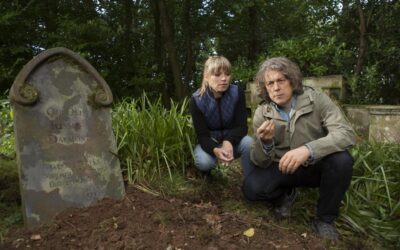
The Science of Mystery
Whodunits, gumshoes, and the intricate dance of detective versus culprit – the world of crime fiction is riddled with mysteries as convoluted as a spider’s web. But, what truly sets the stage for these tantalizing tales are the forensic techniques that transform a mere story into a brain-tickling puzzle.
Let’s cut to the chase and delve into the evolution of forensic science in crime fiction, from the magnifying glass days to the DNA-deciphering era. Classic crime fiction, the granddaddy of the genre, laid down the foundation. Think Arthur Conan Doyle’s ‘Sherlock Holmes’ series, where the titular character, with his hawk-eyed observations and logical deductions, became synonymous with early forensic science. Holmes’s methods, though rudimentary by today’s standards, were revolutionary in his time, relying on footprint analysis, handwriting scrutiny, and the science of tobacco ashes.
Moving on, Agatha Christie, the unchallenged queen of crime fiction, introduced readers to a range of scientific methods through her beloved characters like Hercule Poirot and Miss Marple. In books like ‘The Murder of Roger Ackroyd’ and ‘Murder on the Orient Express’, Christie used poisons, which she knew inside out from her days as a pharmacy assistant, to construct diabolically clever plots. Her meticulous attention to the toxic substances not only added authenticity to her stories but also educated readers about the deadly effects of various compounds.
Transitioning to the modern era, forensic science in crime fiction has become an arms race of wits and technology. Patricia Cornwell’s ‘Kay Scarpetta’ series is a shining example. Scarpetta, a forensic pathologist, unravels mysteries with the help of advanced technology like laser ablation and CT scans, mirroring the real-world advancements in the field. Cornwell’s detailed descriptions of forensic procedures, backed by her exhaustive research, provide a realistic glimpse into the world of modern forensic science.
Another modern marvel is Jeffery Deaver’s Lincoln Rhyme series. Beginning with ‘The Bone Collector’, Deaver introduces us to Rhyme, a quadriplegic detective and forensic genius. The series is a masterclass in the application of forensic science, delving into crime scene evidence like trace particles, fracture patterns in bones, and the minutiae of paper and ink analysis. Deaver’s work stands out for its intricate plotting and the ingenious use of forensic evidence to drive the narrative.
Screen adaptations of these literary works have further popularized forensic techniques. BBC’s adaptation of the ‘Sherlock Holmes’ series, for instance, portrays Holmes’s methods with a modern twist, blending classic deduction with contemporary forensic techniques. Similarly, adaptations of Agatha Christie’s novels, like the recent star-studded ‘Murder on the Orient Express’, bring to life the elegance and complexity of her poison-based plots.
Crime shows like ‘CSI: Crime Scene Investigation’ and its spin-offs have taken forensic science to a new level, though not without criticism for sometimes exaggerating the capabilities of forensic technology – a phenomenon known as the ‘CSI Effect’. These shows, through their dramatization of forensic procedures, have undeniably increased public interest in forensic science, albeit sometimes blurring the lines between fiction and reality.
The dance between classic and modern crime fiction is a testament to the genre’s adaptability and enduring appeal. Classic stories, with their emphasis on logical deduction and keen observation, set the stage for the genre. Modern narratives, with their advanced forensic techniques, reflect the scientific advancements of our time. This evolution mirrors the real-life progress in forensic science, from simple magnifying glass examinations to complex DNA analyses.
Each era of crime fiction offers its unique flavor – the classic tales, with their nostalgic charm, invite readers into a world where keen observation and logical reasoning reign supreme. Modern stories, on the other hand, open a window into the high-tech world of forensic science, offering a more gritty and realistic portrayal of crime-solving.
Crime fiction, in all its forms, serves as a mirror to the advancements and limitations of forensic science. It not only entertains but also educates, making the reader a silent partner in the detective’s quest for truth. The genre’s evolution from the classic to the modern era is not just a journey through different storytelling techniques, but a reflection of our society’s ever-growing fascination with the science of crime-solving.
In the end, whether it’s the quaint charm of a Christie mystery or the high-tech allure of a Cornwell thriller, crime fiction remains a fascinating study of human ingenuity – both in committing and solving crimes. The genre, much like a well-plotted mystery, continues to evolve, promising readers and viewers new and exciting ways to explore the dark, twisted alleys of human nature.
More Mystery Features
Locked Room Mysteries
Unraveling the Enigma of Impossibility
Whodunnit Mysteries
The spine-tingling genre that keeps readers on the edge of their seats
Mysteries of the 1970s
A Golden Era for Mysteries



